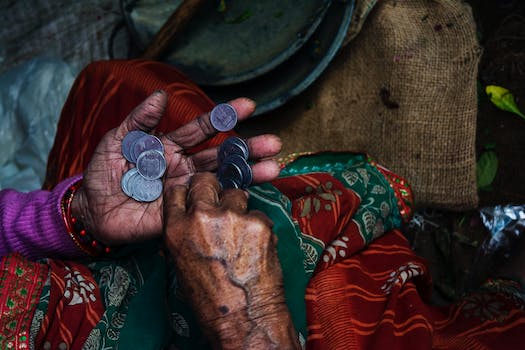-
Table of Contents
- The Challenge of Poverty
- Understanding Poverty
- Causes of Poverty
- Impact of Poverty
- Solutions to Poverty
- Education and Skills Training
- Microfinance and Entrepreneurship
- Social Safety Nets
- Conclusion
- Q&A
- 1. What are the main causes of poverty?
- 2. How does poverty impact individuals and communities?
- 3. What are some potential solutions to poverty?
- 4. Why is it important to address poverty?
- 5. How can individuals contribute to alleviating poverty?

Poverty is a complex and pervasive issue that affects millions of people around the world. It is not just a lack of financial resources, but also a lack of access to basic necessities such as food, shelter, education, and healthcare. In this article, we will explore the challenges of poverty, its causes, and potential solutions to address this pressing issue.
Understanding Poverty
Poverty is often defined as a state of deprivation, where individuals or communities lack the resources to meet their basic needs. According to the World Bank, extreme poverty is defined as living on less than $1.90 per day. However, poverty is not just about income levels; it also encompasses a lack of access to education, healthcare, clean water, and sanitation.
Causes of Poverty
There are many factors that contribute to the perpetuation of poverty. Some of the main causes include:
- Lack of education: Without access to quality education, individuals are unable to secure well-paying jobs and break the cycle of poverty.
- Unemployment: High levels of unemployment can lead to financial instability and a lack of resources to meet basic needs.
- Health issues: Poor health can prevent individuals from working and earning a living, leading to increased poverty.
- Discrimination: Marginalized groups such as women, minorities, and people with disabilities often face discrimination in the workforce, limiting their opportunities for economic advancement.
Impact of Poverty
The effects of poverty are far-reaching and can have long-lasting consequences on individuals and communities. Some of the key impacts of poverty include:
- Malnutrition: Lack of access to nutritious food can lead to malnutrition and stunted growth in children.
- Homelessness: Poverty often results in inadequate housing conditions, with many individuals and families living in overcrowded or unsafe environments.
- Health disparities: Poor individuals are more likely to suffer from chronic illnesses and have limited access to healthcare services.
- Education barriers: Children living in poverty are less likely to attend school regularly and are more likely to drop out due to financial constraints.
Solutions to Poverty
While poverty is a complex and multifaceted issue, there are several strategies that can help alleviate its impact and empower individuals to break the cycle of poverty. Some potential solutions include:
Education and Skills Training
Investing in education and skills training programs can help individuals acquire the knowledge and skills needed to secure stable employment and improve their economic prospects. By providing access to quality education, individuals can break the cycle of poverty and build a better future for themselves and their families.
Microfinance and Entrepreneurship
Microfinance initiatives provide small loans to individuals who lack access to traditional banking services, allowing them to start or expand their own businesses. By promoting entrepreneurship and financial inclusion, microfinance programs can help individuals generate income and improve their standard of living.
Social Safety Nets
Social safety nets such as cash transfer programs, food assistance, and healthcare subsidies can provide temporary relief to individuals living in poverty and help them meet their basic needs. By ensuring access to essential services, social safety nets can help prevent individuals from falling deeper into poverty.
Conclusion
Poverty is a complex and pervasive challenge that requires a multifaceted approach to address. By investing in education, skills training, microfinance, and social safety nets, we can empower individuals to break the cycle of poverty and build a better future for themselves and their communities. It is crucial that governments, organizations, and individuals work together to tackle poverty and create a more equitable society for all.
Q&A
1. What are the main causes of poverty?
The main causes of poverty include lack of education, unemployment, health issues, and discrimination.
2. How does poverty impact individuals and communities?
Poverty can lead to malnutrition, homelessness, health disparities, and barriers to education.
3. What are some potential solutions to poverty?
Potential solutions to poverty include education and skills training, microfinance and entrepreneurship, and social safety nets.
4. Why is it important to address poverty?
Addressing poverty is important because it can have long-lasting consequences on individuals and communities, leading to social and economic disparities.
5. How can individuals contribute to alleviating poverty?
Individuals can contribute to alleviating poverty by supporting organizations that work towards poverty alleviation, volunteering their time and skills, and advocating for policies that address the root causes of poverty.






